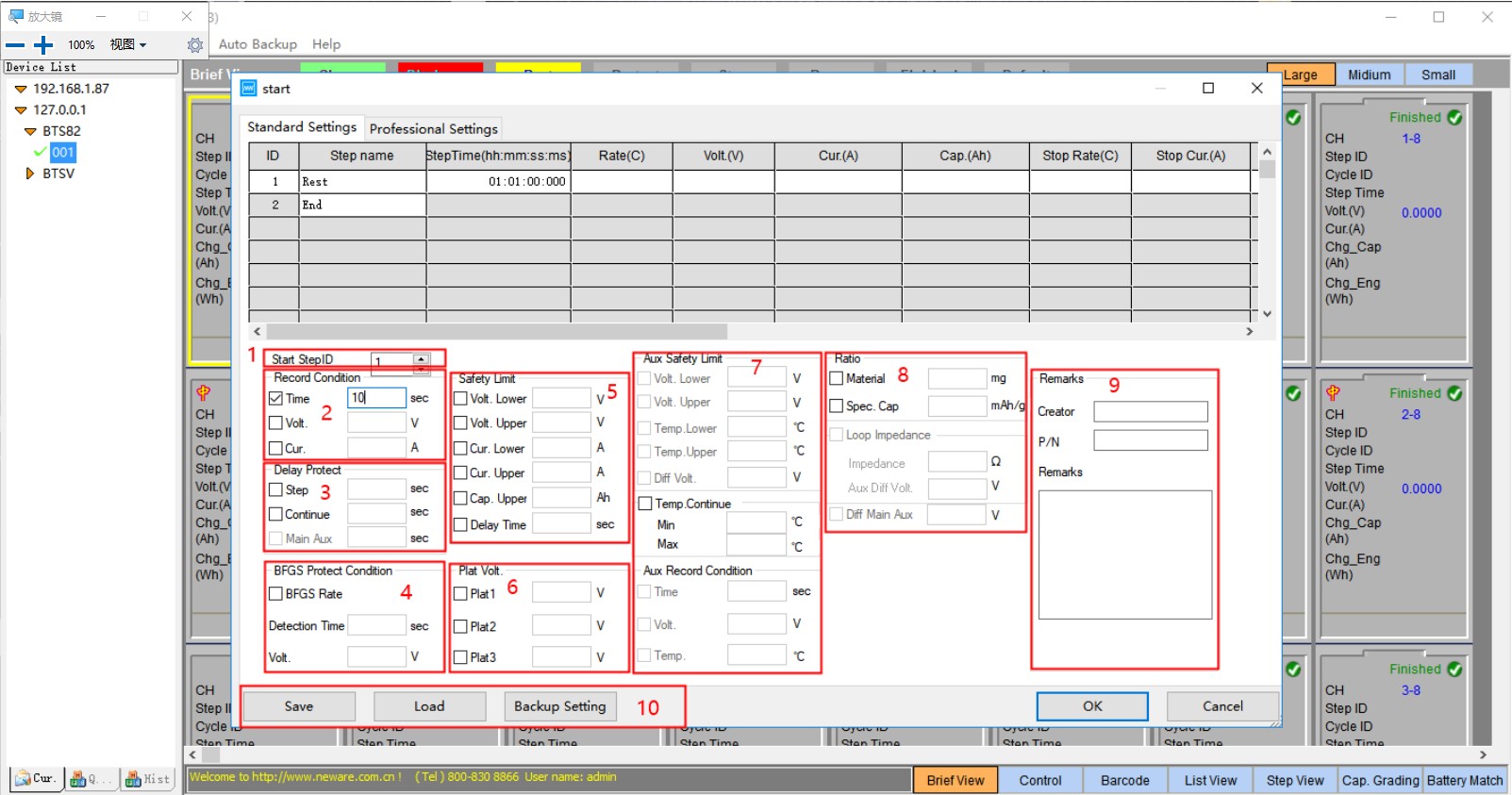
1.Start Step ID: Choose ID position where the first step begins
2. Record Condition: Multiple choices; The test satisfy any condition whatever time, voltage or current, the data is recorded once. This means the relationship between the record conditions is “logical OR”. Please select the record conditions reasonable and meaningful, if the interval is set too small, the data file will be large.
3. Delay Protection: When the protect condition is reached, the system delays the corresponding time to start protection, it can avoid the unstable current, voltage influence during the test;
Work step delay: During the test, when a step reaches the protected condition, the delay Protection will delay the corresponding time and then starting protection;
Continuous protection: When the continuous protection is performed, it will continuously test after the delay setting time;
Main and auxiliary delays: Still in the research and development stage.
4. BFGS Protect Condition (formation Protect Condition):
BFGS Rate: During the battery formation, it can be protected by setting the rate of change of the voltage;
During the “Detection Time (a channel from start to detection time)”, if the value of voltage change is less than the setting “voltage” value, the channel will automatically enter the protection state, otherwise, the channel will continue to perform the test.
5. Safety Limit: Safety protection; Channel protection Is performed when a channel has an abnormal current, voltage sampling point.
For example, the lowest discharge voltage of lithium battery is usually 2.8V, and the highest charging voltage is 4.2V, therefore the “Volt. Lower (lower voltage limit ) ” is set to 2.75V, the “Volt. Upper (upper voltage limit ) ” is set to 4.25V; Similarly, the “Cur. Upper (upper current limit) ” is positive + (charge). The “Cur. Lower (lower current limit) ” is negative – (discharge);
Delay time: When the safety limit is reached, the system delays the corresponding time and then start the safety protection condition. For example, the upper limit of voltage (Volt. Upper) is set 4.25V, If the delay time is not set, the channel is immediately protected, If the delay time is set to 1 second, the channel delay 1 second and then safety protected.
6. Plat Volt: Users can set three different platform voltage values, which is an important parameter for battery grading.
7. Aux Safety Limit: During the test, when the battery cell voltage and temperature abnormal the channels are protected;
As long as any auxiliary channel meets the protection condition, the main channel enters the protection state immediately; This function can only be implemented when the auxiliary channel exists, otherwise, it is not available.
The “Diff Volt.” is the voltage difference between the main channel and the auxiliary channel. When the voltage difference exceeds the set parameter, the channel enters the protection state.
8. Ratio: When the active material parameter is set, the specific capacity (Spec.Cap ) varies with the number of the active material parameter; Specific Capacity = Capacity / Mass of The Active Material;
When the C Rate or Stop C Rate are set in the work step, the active material parameter and specific capacity (Spec.Cap ) must be set.
9. Remarks: Including the Creator, batch number, remarks notes, etc., this information will be stored in the database along with the work step information, which is convenient for users to search for test data.
10. Save the file (Save): After setting, the work step can be saved, In order to facilitate future implementation;
Open the file (Load): The saved files can be open directly; all the work step files can be saved and opened;
Backup settings: Backup the test data, the backup path, file name, file format and backup condition, etc. can be set.
If you have more questions, please contact me with: lulu@newarebattery.com https://www.facebook.com/batterytester.neware
Comments are closed.









